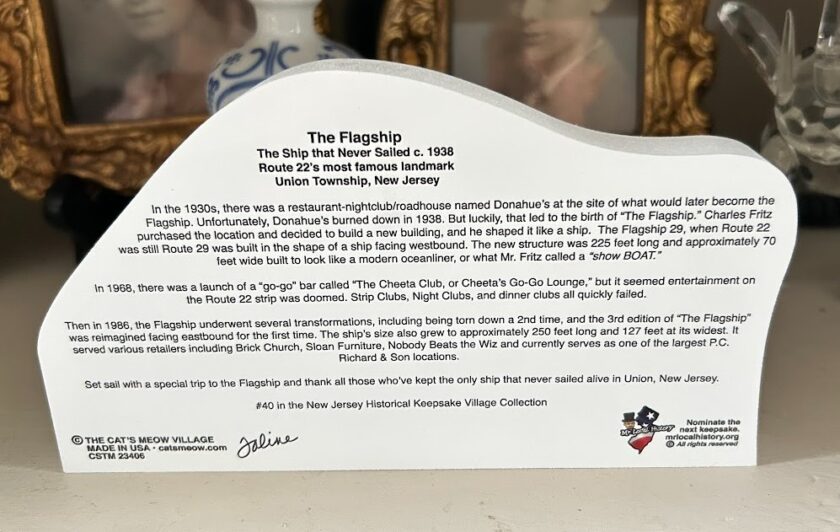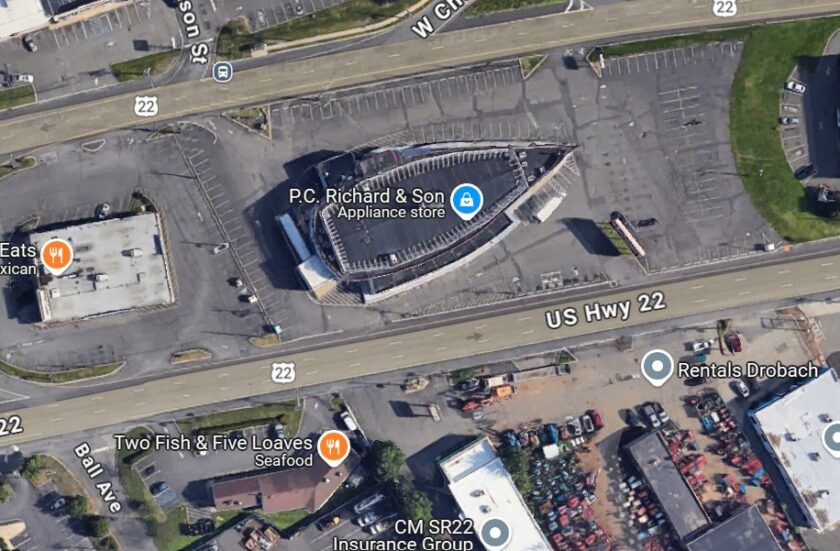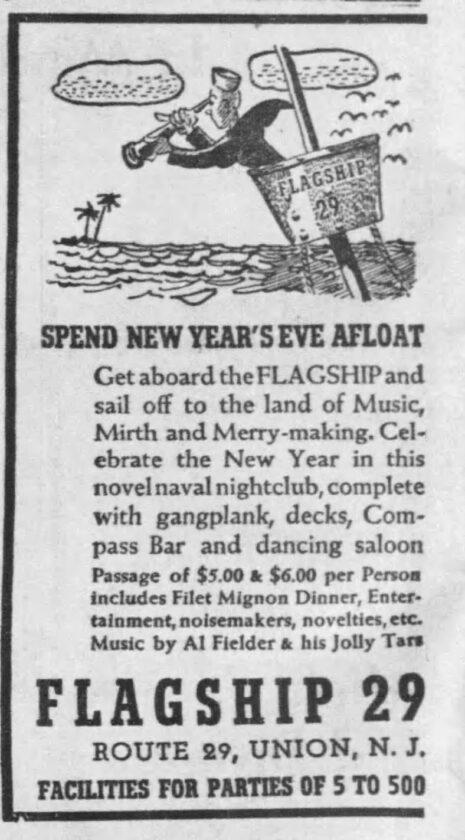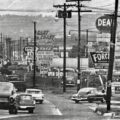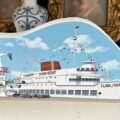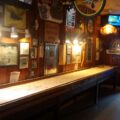Update:
Union’s Historic Flagship is now a beautiful collectible
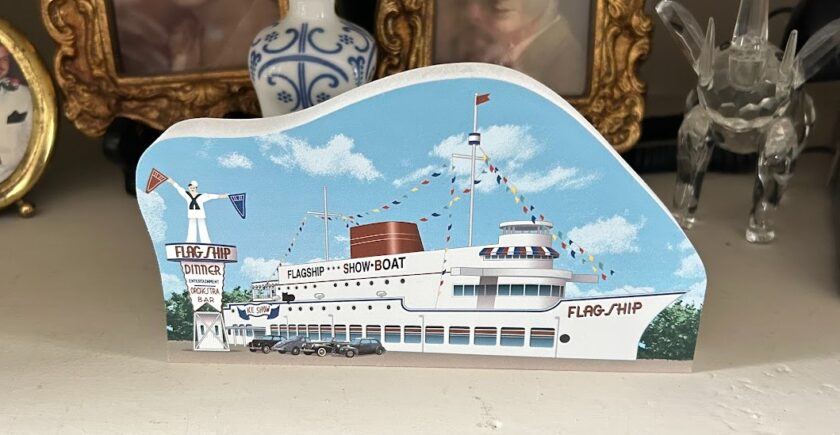
Retrospective:
The Legendary Flagship on Route 22 in Union County, New Jersey
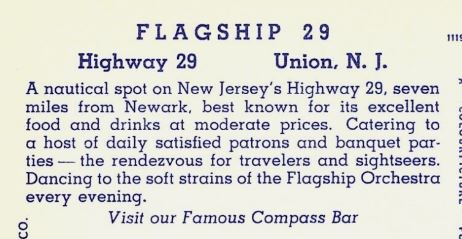
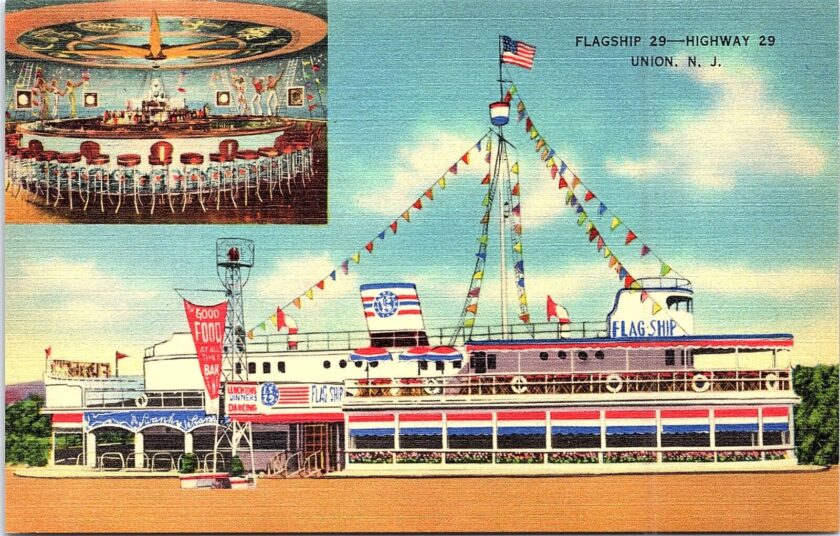
If you’ve ever driven east or west along Route 22 in Union, New Jersey, there’s no way you couldn’t see it. Sitting in the center island of what is often referred to as the most dangerous highway stretch in the United States is where you’ll find the flagship, docked in the exact location for over 86 years, going back to 1938. However, it’s not just the structure of the building; it’s the numerous businesses that have called “The Flagship” home over time.
That Death-Defying Route 22 with the Center Island – Oh Look – A Ship (then Crash)
I have been driving past this landmark since I got my driver’s license in 1979. Those who needed to make a U-turn to go from the eastbound side to the westbound side knew to take the second U-turn, as the one closest to the Flagship was always a disaster. Enough of the driving memories from the “center island.” We are here to discuss the history of what locals affectionately call “The Flagship.”

The Flagship on Route 22 has a fascinating history. In the 1930s, a restaurant, nightclub, and roadhouse named Donahue’s Rest was located at the site that would later become the Flagship. Unfortunately, Donahue’s burned down somewhere in the mid-1930s. Luckily, that led to the birth of “The Flagship.” A few years after Donahue’s burned down, Charles Fritz purchased the location and decided to build a new building, shaping it like a ship. The Flagship 29, when Route 22 was still Route 29, was built in the shape of a vessel and reopened in 1937. The ship’s structure was 225 feet long and approximately 70 feet wide and was supposed to replicate the look of a modern oceanliner, or what Fritz called a “show BOAT” – Ha Ha.
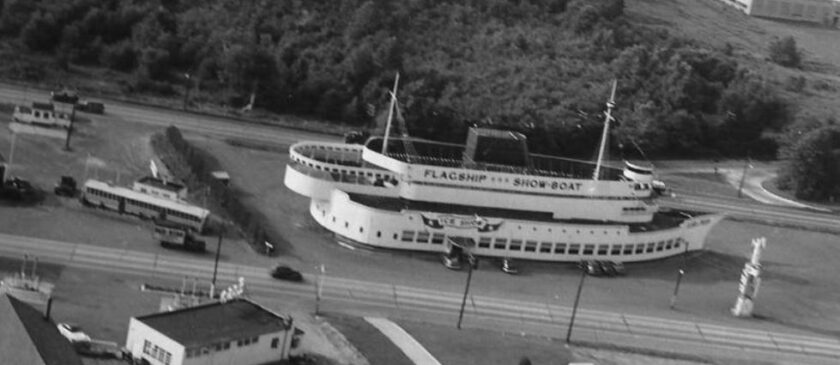
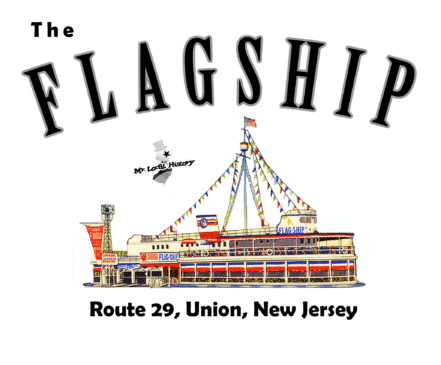
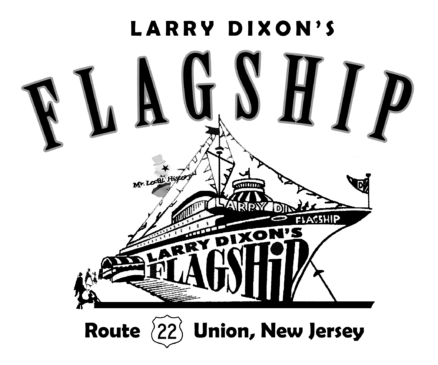
Billed as “America’s most nonsensical band,” The Korn Kobblers was part comedy act and part big band. In addition to traditional musical instruments, they added their self-invented instruments like the “skoocherphone” and the tuned smokestack, not to mention the one instrument no hill-billy band should have, a washboard. In addition, the Flagship featured stage acts, including Jackie Gleason, Dean Martin, and Jackie Mason.
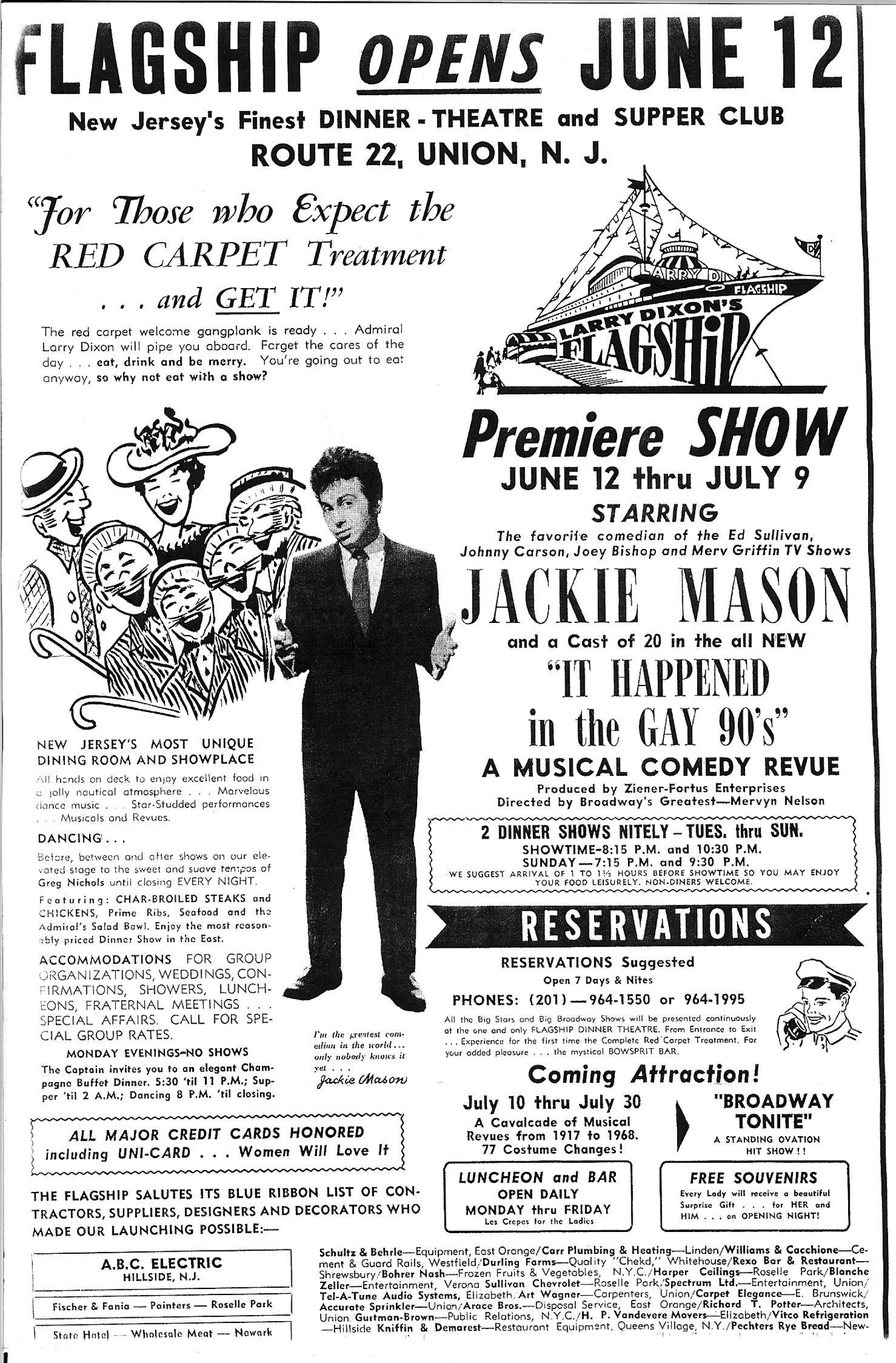
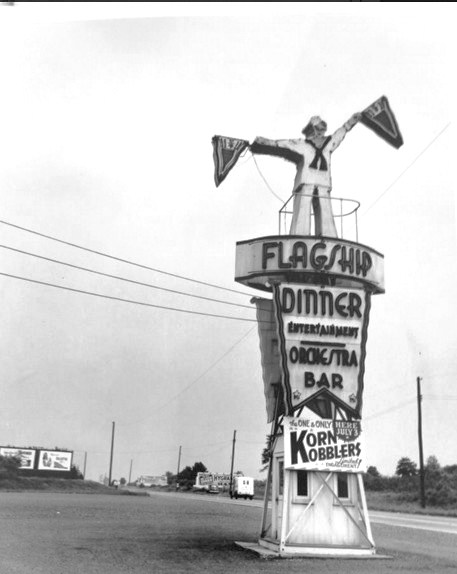
For years, the flagship operated as a restaurant. Tragically, the second incarnation of the Flagship burned down on June 11, 1942. You would think that building ships out of wood was something from the past, but this was one of the leading causes of destruction at the time. After World War II, the flagship was rebuilt and reemerged as a nightclub.
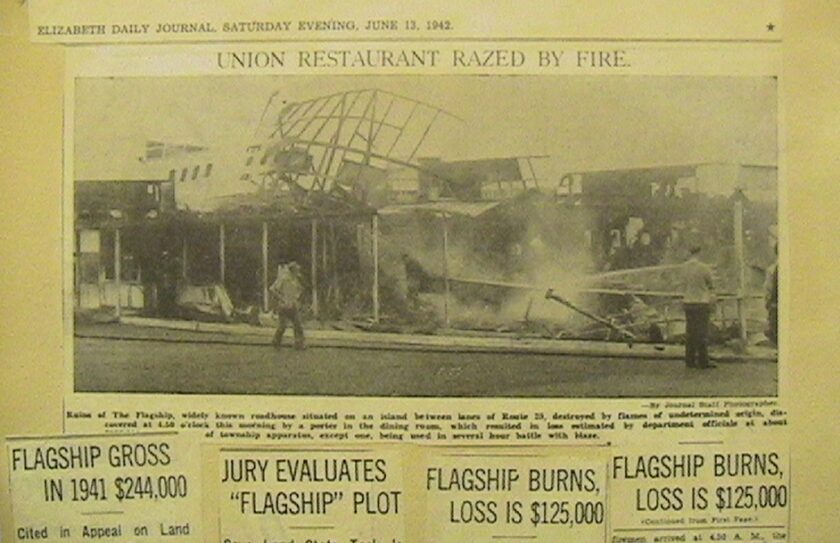
The Flagship 1960s – 1980s
After a complete remodeling/rebuilding, on September 30, 1956, a “christening party” was held to celebrate the Flagship’s new incarnation. In the 1960s, the ship was repurposed as an American Shops clothing store. It was noted that former shortstop for the NY Yankees, Phil Rizzutto, was a salesman there.
Later, as a dinner theater in 1968, there was a launch of a “go-go” bar called “The Cheeta Club,” also known as Cheeta’s Go-Go Lounge”. But it seemed that entertainment on the Route 22 strip was doomed. Strip Clubs, Nightclubs, dinner clubs, or whatever… all quickly failed.
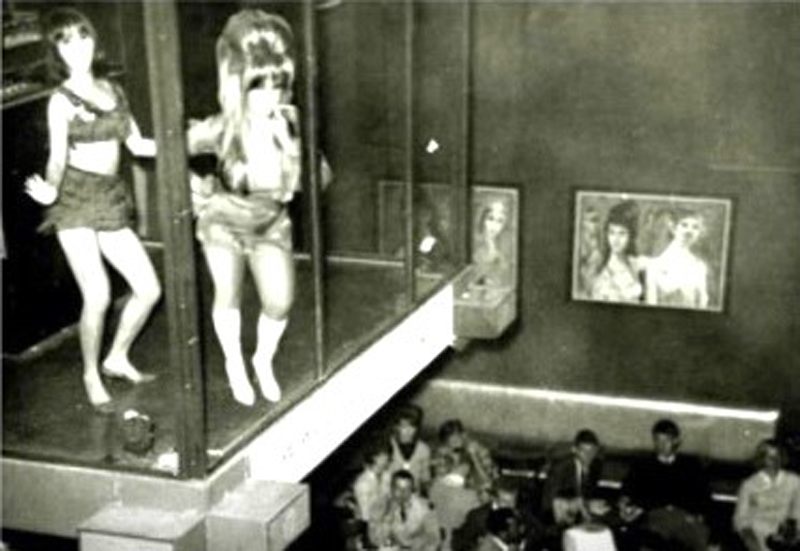
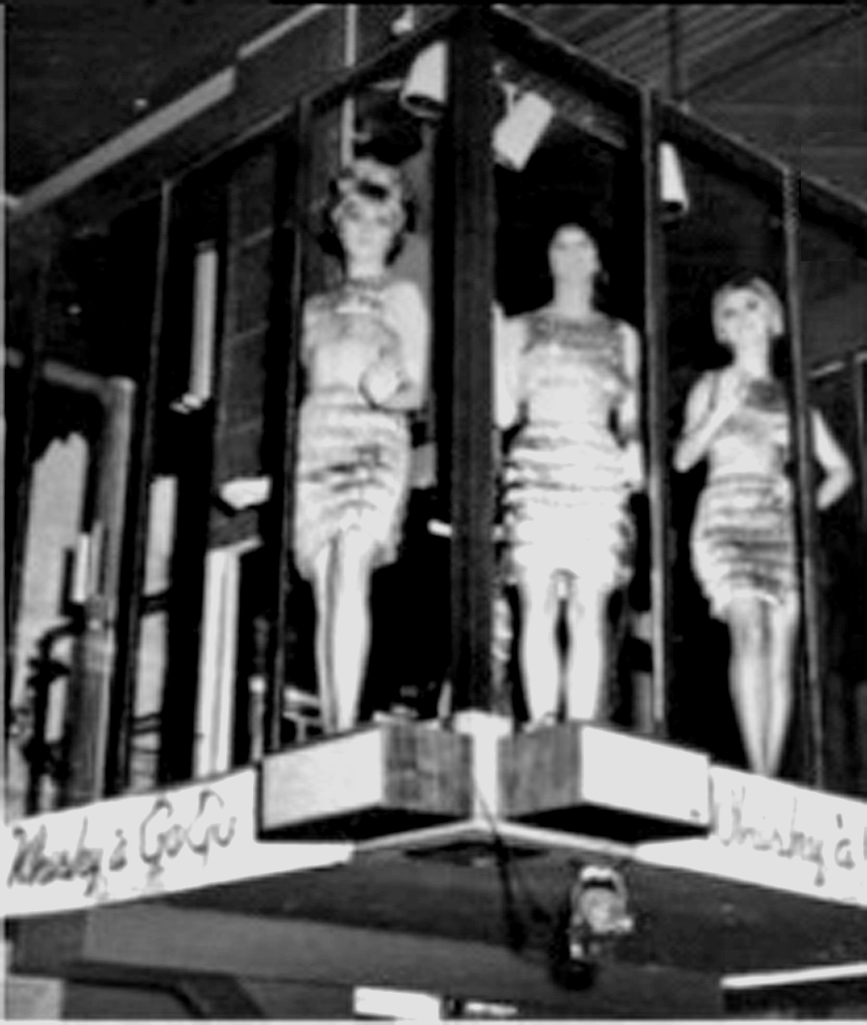
After serving as a dinner theater, the Flagship underwent several transformations over the years, including being torn down. The 3rd edition of “The Flagship” was rebuilt in 1986 by Brick Church Appliances. The ship’s size grew to approximately 250 feet long and 127 feet at its widest. It has served various purposes, including housing appliance stores like Brick Church, Sloan Furniture, and Nobody Beats the Wiz. Currently, it serves the retail community as one of the largest P.C. Richard & Son Appliance and Electronics stores.
The Route 22 Flagship Online Scrapbook
Click on any image to start the slideshow.
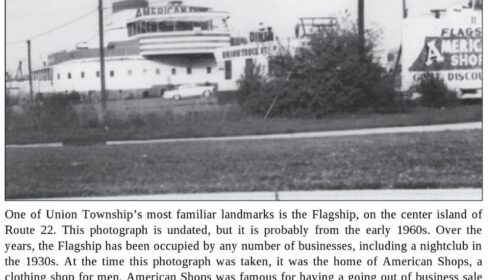
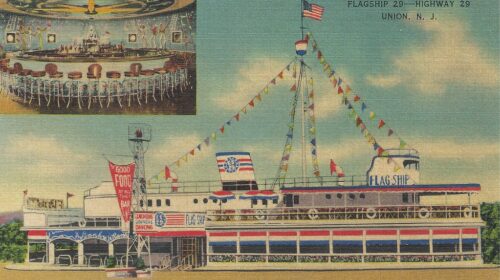
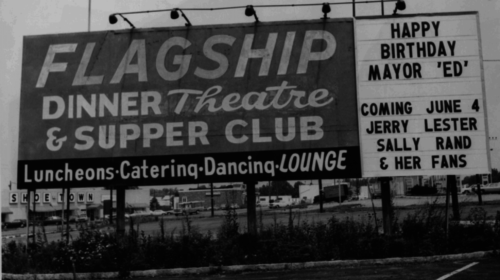
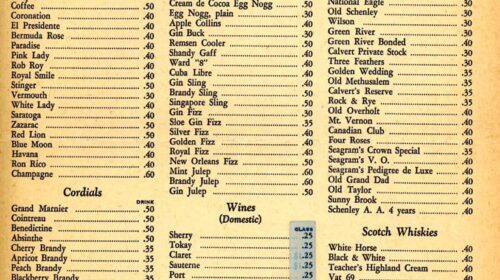
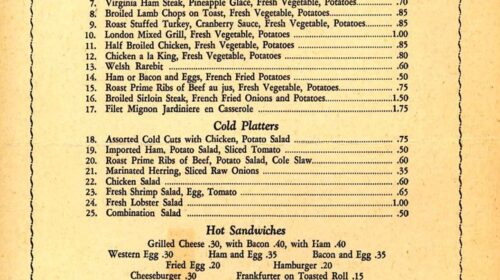
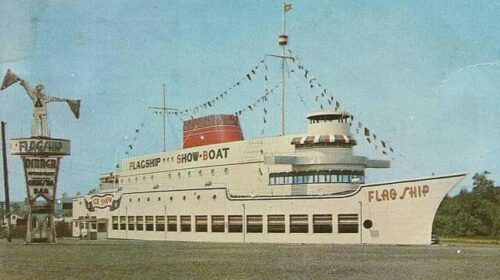
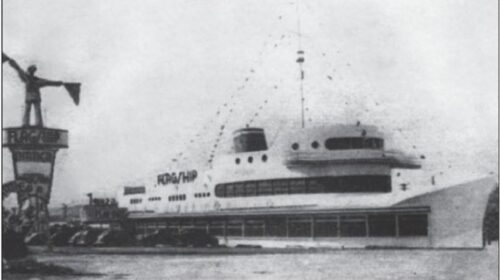
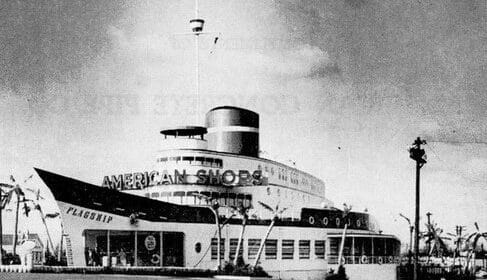
Sailing West

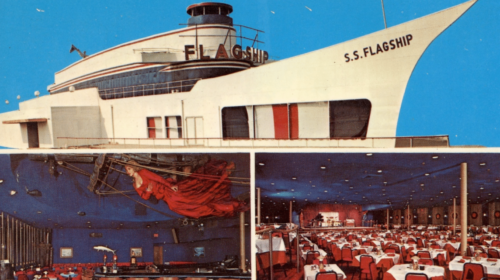
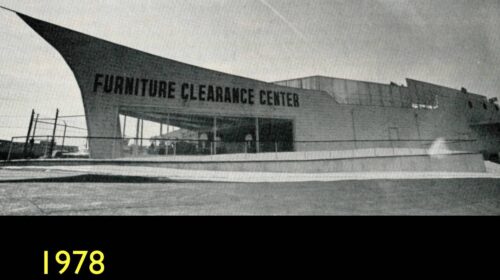
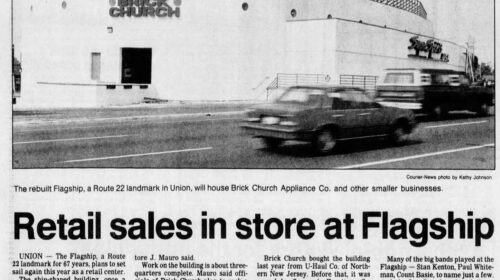
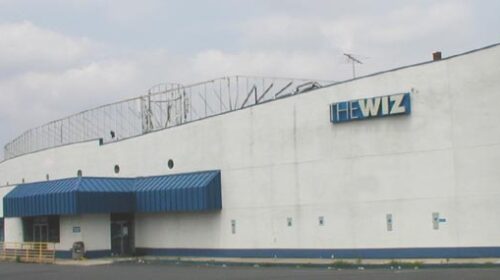
Sailing East
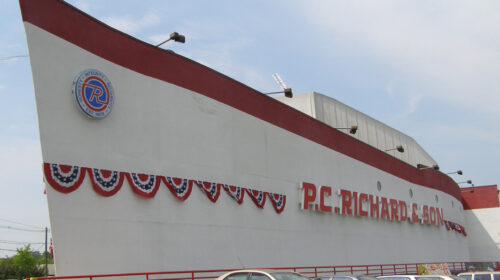
Flagship Business Timeline
- Donahue’s Roadhouse restaurant-nightclub (1930s)
- Flagship 29 Supper Club / Nightclub / Dinner Theater (1938 – 1942)
- American Shops Clothing Store (1960)
- Cheeta’s Go-Go Lounge (1968)
- Seeman’s Furniture (HaHa) & U-Haul Center (1970s)
- Torn down in 1986 and rebuilt. The ship changes direction!
- Brick Church Appliance Store / Super Sports USA (1988)
- The Wiz Electronics (1993)
- Planet Honda storage (2003)
- P.C. Richard & Son Electronics (2004 – Present)
Route 22 History
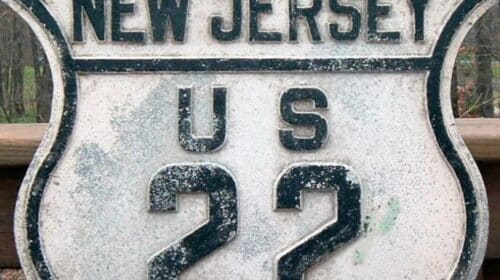
Route 22 in New Jersey has a rich history, spanning centuries of development and change over the decades. Initially, 22 was part of the Lenape Native American trail system, traversed by indigenous peoples for trade and travel. With the arrival of European settlers, this trail evolved into a vital artery for commerce and transportation. In the 18th century, the road became known as the “Old York Road,” connecting the colonial settlements of New York and Pennsylvania. This route was crucial during the American Revolutionary War, as troops and supplies moved along it.
In New Jersey, the route runs for 60.53 miles from the Easton–Phillipsburg Toll Bridge over the Delaware River in Phillipsburg, Warren County, to Interstate 78 (I-78), US 1/9, and Route 21 at the Newark Airport Interchange in Newark, Essex County. The entire length of 22 runs from Cincinnati, Ohio, at US 27, US 42, US 127, and US 52 to Newark, New Jersey.
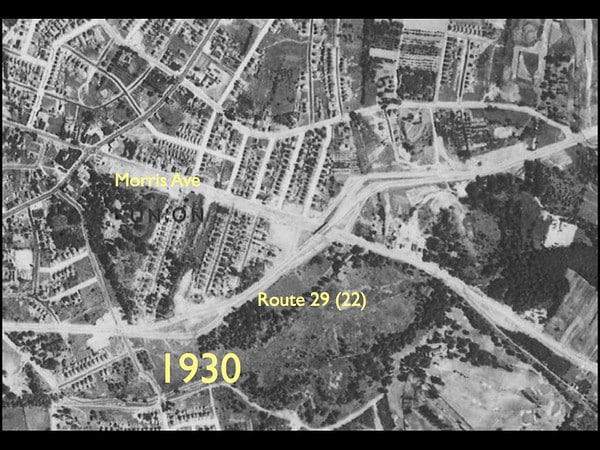
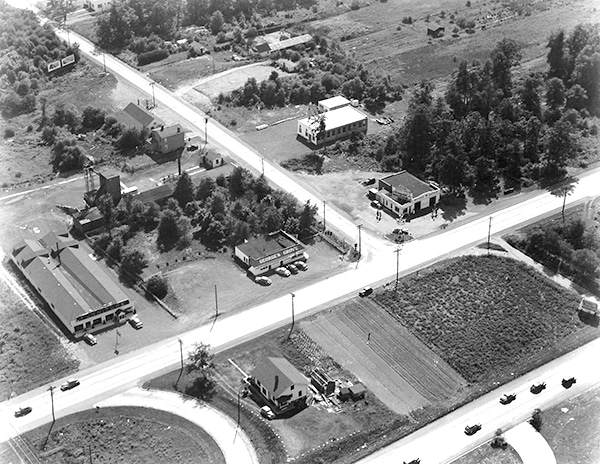
By the early 20th century, the automobile age had arrived, and the need for improved roads became apparent. In 1927, the New Jersey State Highway Department designated the Old York Road as Route 29. Over time, as traffic increased and urbanization spread, the road underwent expansions and improvements. In the late 1920s and early 1930s, Route 29 was incorporated into the emerging U.S. Highway System as U.S. Route 22 (US 22), connecting Newark and Phillipsburg. Completing the Newark Bay Extension in the 1950s facilitated smoother travel between Newark and Jersey City.
These businesses formed the early commercial landscape along Route 22, catering to the needs of travelers and locals alike. Over time, as the road evolved and urbanized, the types of businesses along Route 22 diversified to include a wide range of retail, dining, and service establishments. Oh, and it also became a visual death trap as what became known as “the island” in Union gave you not just businesses on two sides, but businesses on four sides, complete with neon signs, random entrances/exits, and so many lanes that 22 earned itself a nickname, “the suicide highway.”
Now You Can Remember ALL Those Route 22 Businesses
Our Mr. Local History artists have been working hard to find original ads, photos, and logos of some great retro businesses from the early years along Route 22. Explore our growing collection and personalize your keepsakes.
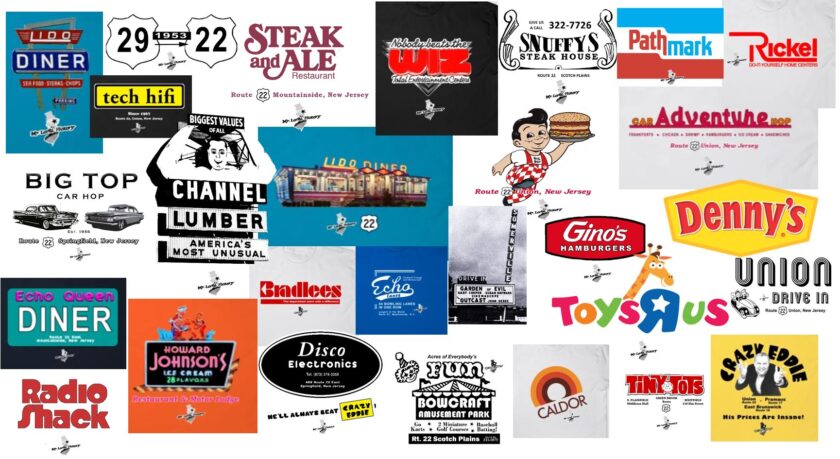
More MLHP Local History Posts
Union Historical Society’s The History of the Flagship on Route 22
